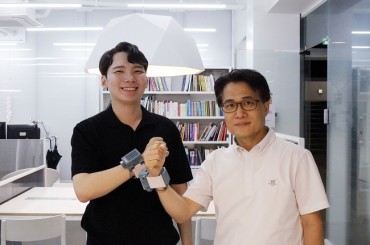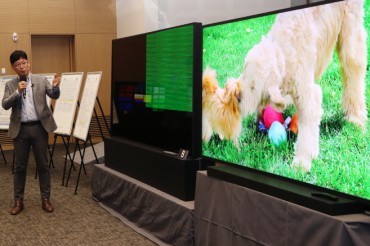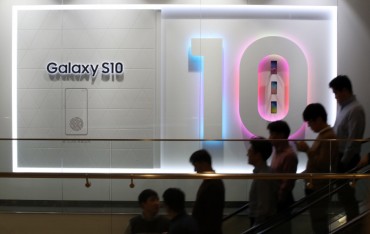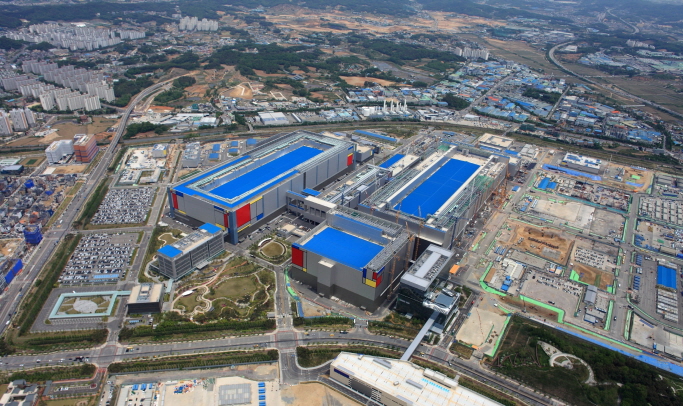
This photo provided by Samsung Electronics Co. on May 21, 2020, shows the company’s chip plant in Pyeongtaek, south of Seoul.
SEOUL, May 26 (Korea Bizwire) – Samsung Electronics Co. and SK hynix Inc. took up more than half of the global NAND flash memory chip market in the first quarter, a report showed Thursday, up by more than 8 percent from the previous quarter.
Samsung, the world’s largest memory chip maker, expanded its market share in the January-March period due largely to a fall in shipment by Japanese chipmaker Kioxia, following contamination incidents at its facilities, industry tracker TrendForce said.
NAND flash is a type of non-volatile storage that does not require power to store data.
In the first quarter, Samsung’s NAND flash sales rose 3.4 percent to US$6.32 billion and its market share went up by 2.2 percentage points to 35.3 percent from the previous quarter.
That compared with the 3.0 percent quarterly decline in the global sales, which totaled at $17.9 billion.
Samsung’s growth in sales was driven by sluggish supply from Japan’s Kioxia and San Jose-based Western Digital, an influx of rush orders and solid state drive (SSD) orders from North American corporate clients, TrendForce said.
SK hynix and its U.S. subsidiary Solidigm, combined, rose to the second spot with an 18 percent market share.
SK hynix set up Solidigm early this year following the completion of the first phase of Intel NAND and SSD business acquisition in December.
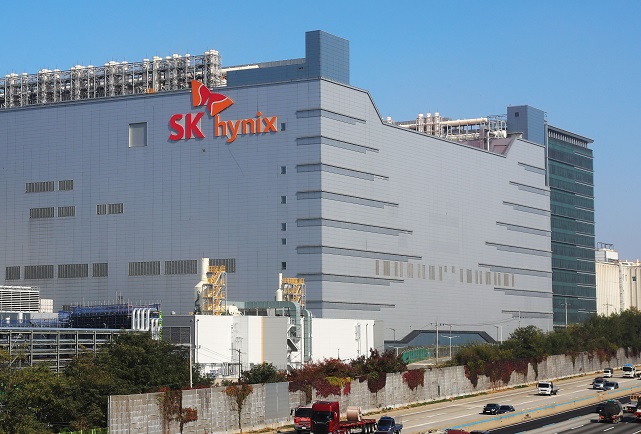
This photo, taken on Oct. 20, 2020, shows South Korean chipmaker SK hynix Inc.’s plant in Icheon, south of Seoul. (Yonhap)
The combined sales of the two companies declined 10.7 percent and their market share also slightly dropped by 1.5 percentage points, compared to the previous quarter when the two operated independently.
TrendForce attributed the decline to sluggish demand for smartphones in China and falling contract prices.
Kioxia kept its No. 2 spot at 18.9 percent, with sales declining 4.5 percent. Western Digital slipped to the fourth spot at 12.5 percent, due to the halt in production at the facilities in Japan it jointly runs with Kioxia.
The research company said oversupply in the global NAND flash market in the first quarter led to a drop in contract prices, especially for consumer products, appetite for which has weakened due to “the Russian-Ukrainian war, the traditional off-season, and rising inflation.”
“Client inventories have increased significantly, so it remains challenging for overall bit shipment volume to offset potential decline,” it added.
The company, however, forecast the market will grow by more than 10 percent in the second quarter on strong demand for high-capacity SSDs used in data centers and an expected rise in prices.
(Yonhap)




